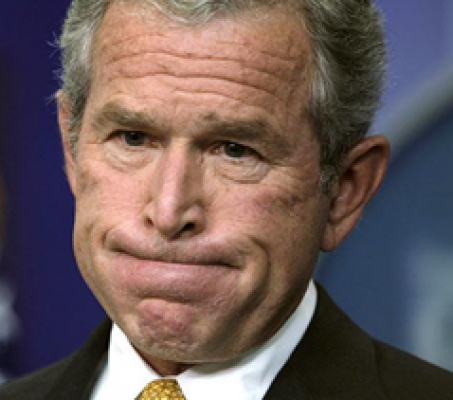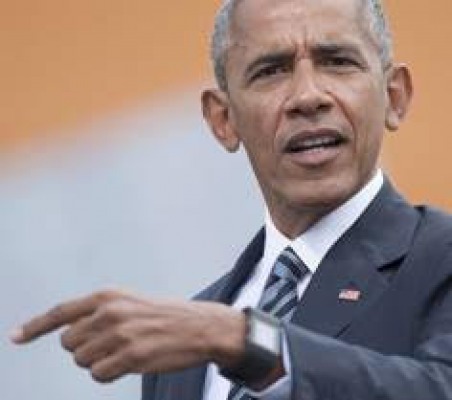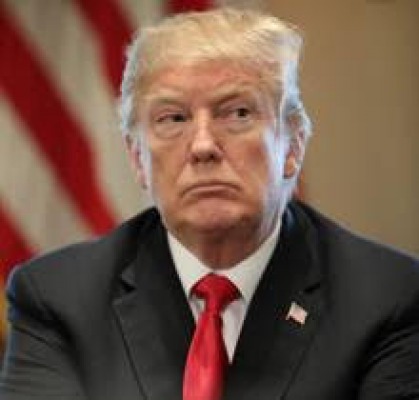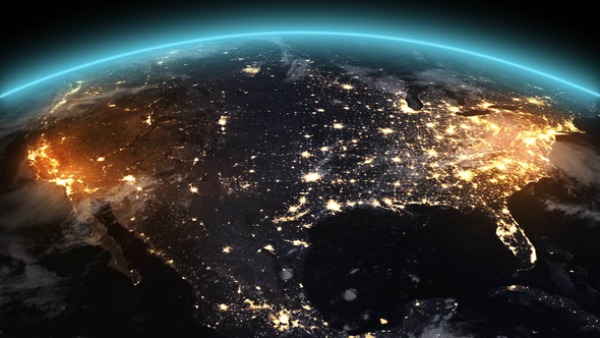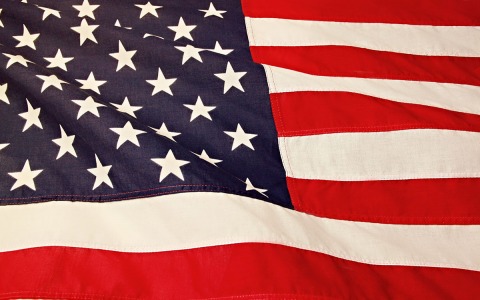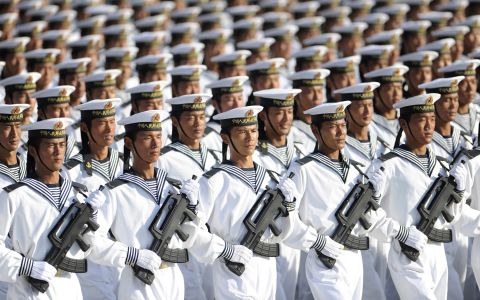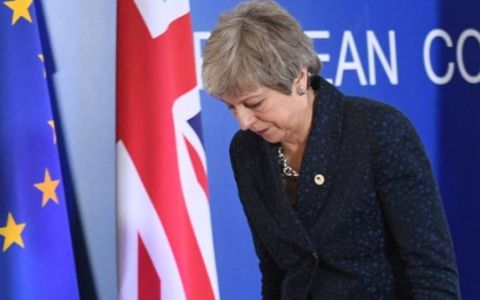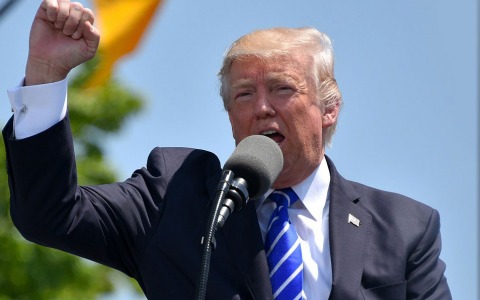Americas Mission - To deter WW3 with China in the 2025-27 Commodity Peak.
America's prosperity, economic vitality, and military capability and intent are vital to the continuation of free liberal values in a global human society.Breaking The code of History clearly demonstrates that History repeats itself and sometimes in very specific ways.
The Run-up to WW1
By 1900 although Britain appeared to be the unchallenged hegemonic Global Power all was not as it seemed. Britain had in fact quietly peaked in itss relative power around 1870/80 but the gap between its power and the Nations below it seemed so great as to be unassailable. However, by 1900 American and German economic power was closing that gap fast, and in the former case was soon to exceed it. Interestingly America at that stage viewed Britain as its natural competitor and maritime foe. So as Britain declined, it used all its power and reserves to face down the German challenge and received American support and in so doing with its allies won WW1. But Germany’s national energy was such that it regrouped and started WW2 in Europe. Again Britain America and Russia faced down Germany and won. In effect, Britain's decline had been accelerated by Germany’s challenge but in winning it lost its empire making way for a new global hegemonic-America. So one could argue that in decline Britain’s last great success was to repel a challenge from less liberal society-Nazi Germany, preserving global liberal values upon which it was founded.
The Run-up to WW3? The deadly dance of the Eagle and the Dragon
Today it is America that in 2000 seemed so powerful that the gap was massive between it and any combination of other challengers. However, Like Germany in the 1900s China has now arisen and locked horns with America. In a fascinating analogy, India today acts in a similar role to America in the 1900s as the stalking third party seeking power in the decades ahead who is allied with America against China.
Taking this analogy to it extreme America now has a single mission to preserve global liberal values. Whilst in absolute and relative decline much as was Britain, it must have the national energy, economic power and military internet to face down the Chinese challenge in the next decade and create a new cold war impasse that will deter the Chinese from the initiating a war of expansion as the commodity peak is reached in 2025/27. Much as Britain in the run up to the outbreak of war in 1914 faced a navel challenge from Germany, today America faces a navel challenge from Russia and China.Although the days of PAX America have passed it is critical the the US Navy is rebuilt to a 355 ship main combatant force supplemented by a myriad of corvette and fast patrol boats that can hold back the challenge to the freedom of the oceans and contain the Chinese threat to within its local region of influence.
An effective deterrence over the 2025-27 commodity price peak to will allow decades of lower friction national relations for the nations of the the world in which to find new and better ways to work together. But at the same time America must do all it can to unite it's divided people and re assert it's liberal founding principals upon which it can mobilize it's population and allies to maximum effect.
The Deadly Dance of the Eagle and the Dragon:
Part One Introduction
It has been some 17 years since the genesis of Breaking The Code of History (BTCH) which followed the 9/11 attacks, and 8 years since its publication in 2010.
The first core geopolitical observation was that the dominant geopolitical organizational structure that had shaped the modern world had been based on the Super Western Christian Empire (SWCE), comprising a sequence of national empires. Initially, the Empire was dominated by the maritime Portuguese, followed by the Spanish, who were eclipsed by the continental power of the French, who in turn were dwarfed by the global maritime power of Britain. Finally came America. In essence, America is the last of the empires of the SWCE and it is in the terminal stage of decline. Meanwhile, in a global balance of human planetary entropy, the Super Asian Empire (SAE) is in the ascendancy. This is driven by the second empire of China, which is rapidly moving into the vacuum created by American decline.
Now that 17 years have passed it makes sense to review how the two empires have progressed along their respective paths on the five stages of Empire Cycles. This great West to East power shift in today's global world is a geopolitical event of such magnitude that it only occurs every 400 to 500 years. Its’ global impact will touch every human on the planet over the next decade and as such should be of interest and concern to everyone.
The predictive power of the Five Stages of the Empire model helps us to understand how human systems work. Behavior can be anticipated in a way that no conventional analysis system can match. This has been illustrated in the accuracy and detail of previous predictions generated by the BTCH model.
The vital question that any reader should be asking at this stage is:
“Having predicted the time sequence so accurately up to this point what does the model predict for the next decade?”
The answer is a very sobering one and was outlined in the book of the future within BTCH. The mechanics of such power shifts is such that the rate of power change is always regulated by the decline of the Hegemon, whose decline creates the power vacuum into which the rising power moves. This article is designed to update the progress of this great power shift with an analysis of the dynamic between the Eagle and Dragon.
In a series of articles over the days ahead, we will commence with an analysis of America, "the Eagle" and follow with China, "the Dragon".
Part 2: America and its' three false dawns
Since 2001 and 9/11, America’s three presidents have all contributed to America's decline in their own inimitable ways. In this America has conformed to the characteristics of this phase of decline outlined in the five stages of Empire. Each of the last three Presidents lost a specific element vital to the composite of American power in what we will call the three false dawns.
The First False dawn: The loss of the Eagles moral imperative to rule
The First President of the declining phase, Bush Junior, lost America’s moral imperative, whilst following the advice of Dick Cheney and Donald Rumsfeld. This was following 9/11 when he became subject to the neoconservative agenda of expansion. The fear of further Islamic terrorist attacks was harnessed and used to drive the imperative to pre-emptively invade the perceived strongholds of America’s three main protagonists: Iraq, North Korea, and Iran. However, although the neocon agenda had expansive aspirations to make the world American, it was but hubris. In reality, the national energy of America was in decline and thus at its weakest since America’s inception and as such was unable to rise to the aspiration. This was, therefore, the false dawn of American influence. Fear eroded the moral imperative of America and made America into the very nation that prior to 9/11 the Jihadists had claimed it was. Critical to the success of all empires is its moral imperative, or the right to rule through self-perceived superior moral values. In the case of America, those values were severely eroded by Guantanamo Bay and a program of rendition, state torture, and kill and capture missions in Iraq and Afghanistan. Those missions may have killed and captured many of their targets, but an unintended consequence was that many more individuals were turned into dedicated enemies who joined the America resistance movement. The result was an America exhausted by a long asymmetric conflict with the radical Islamic world. The Islamic world was in late regionalisation and due to its demographics had time on its side. This misdirected application of force by America critically distracted and weakened it from the real threat to America's hegemony, the rise of China.
The Second False dawn: The great American power giveaway
Next came the smooth-talking but highly narcissistic, and consequently destructive, presidency of Barack Obama.
Whilst the world celebrated a new hope that America had entered a golden age with the arrival of its first black president this was, in reality, the second false dawn. BTCH took a view contrary to the popular one based on the five stages of empire model. The social algorithm noted that in the phase of over extension, the underclass will have carried on having multiple children, as compared to the relatively secure and wealthy over class with lower mortality rates. The consequential shift in demographic ratios then facilitates the election of a member of the underclass to ultimate power. There is always great hope at this stage that things will be different. In reality, the focus of the policy is inevitably social equality and integration, at the expense of the foreign policies that have maintained the boundaries and influence of the empire. The result is that the empire goes into rapid decline.
In addition to the above process, further damage to American power resulted from Obama’s narcissistic behaviour. This was unrecognized and unrestrained, allowing him to do maximum damage to American influence. BTCH predicted that after two terms Obama would go down as one of the worst Presidents in American history. The full truth of this has yet to be recognised.
BTCH dubbed Obama's term in office as “the great power giveaway”, in which America ceded power across the globe to its main challengers. A prime example was when it precipitously and prematurely pulled out of its middle eastern military commitments that had already cost significant blood and treasure, leaving a vacuum into which ISIS sprouted and cast its long shadow, and into which Russia then jumped to assert authority. As a by-product of the chemical red line in Syria and Putin's challenging letter to Obama in the New York Times, it was Obama who authorized and prompted the revolution against Russian sympathetic rule in Ukraine as a revenge action. This failed to recognize the strategic importance of Ukraine as the USSR's and now Russia’s vulnerable underbelly. The consequence was that Obama forced Russia away from the West and into an alliance with China. This was a terrible outcome for the West and the biggest strategic blunder in modern history. The consequences of this action will greatly affect the outcome of the next decade.
Meanwhile, Obama allowed China to encroach and expand its influence across the globe by the application of its economic power (debt colonialism) without any balancing challenge from America. By the end of Obama's 8-year term, America was a sinking empire of constricting global influence. The unipolar world had clearly given way to a multi-polar world with new, potentially very dangerous, strategic competitors (on their way to becoming future enemies) emboldened by Obama’s week foreign policy. Foremost of these is China. The situation is similar to the time when Germany in the run-up to WW1 saw Britain as weak and decaying, and thus ripe to be challenged.
The Third False dawn: The loss of national cohesion
Thus the stage was set for Trump with his promise to make America great again and so reverse the Obama giveaway. A sentiment that resonated with a population who recognized just how far their great nation of the Eagle had fallen from absolute power in the world.
It must be noted that the declining phase of an empire or any system, is exacerbated by the rigidity of the political system and governing institutions that allows great right-brained leaders to rise to the fore. The choice of Clinton or Trump exemplified America's point on the decline curve. Both were wholly unsuitable Presidential candidates when compared to the majority of Presidents before them, where service and integrity was a key driver rather than self-interest. It is interesting to note that empires in decline have switched from the embedded cultural value of service to the empire, to one where individuals and leaders are more likely to seek to serve themselves. Hence the rise in narcissistic leadership from the top down, which unpicks the fabric of collective endeavor of a society. Americans should not feel singled out. When in decline Britain had its own narcissistic leaders, foremost of which was the wartime leader Lloyd George who took office in 1915. His divisive behavior to suit his own ends, even when Britain was sorely pressed by Germany, make Trump's misdemeanors seem minor. A full appraisal of his office is given in Lions led by Lions
Notably whilst Obama was an unrecognised and therefore unconstrained narcissistic leader, Trump was quickly identified as such and the political system has sought to contain his worst characteristics. As long as this institutional restraining action continues to mitigate some of the worst decisions, it is possible that Trump's leadership could actually be the best possible available option to lead the American fight back against China. Trump will be perceived by China and Russia as unpredictable, determined and aggressive in any kind of conflict. These are the perfect qualities of intent in deterrence for a nation that is no longer at the top of its game. This is especially true for the West at a time when it is perceived as being weak and thus vulnerable to predatory aggression from Russia and China.
Returning to the negative aspects of Trump's leadership style. The already fractious American national energy has been exacerbated by Trump's abrasive narcissistic personality. Trump seems to be the very opposite of a regal, emotionally stable and well-judged president. The last election proved to be the “devils choice” for America. On the one hand a clearly dishonest and entitled Clinton, or on the other a maverick and offensive President who espouses the right policies to allow America to face China and delay its rise over the next decade. With such a divisive self- oriented energy leading the nation, it is no surprise that American Politics became highly divisive. This division exists between parties, and within parties, which represents a critical loss of national cohesion. However, the divisive energy within America today is not caused by Trump. It is rather a fundamental characteristic of decline. Trump may further catalyze this divisive energy, but it's important to note that it is actually innate energy within the system at this stage of its cycle.
Regrettably, the Trump presidency can best be typified by a state of national divisiveness. A lack of national cohesion is the very dynamic that in the past has brought down every great empire in history; empires crumble due to pressures from within. Empires are inevitably consumed by a discourse which allows challenging powers to gain significant traction. Whilst everything about Trump is divisive, on the positive side, he is enacting the core strategy that America needs to challenge China and slow down its expansion before it is too late to contain. However, so far Trump’s style of leadership has emphasized the divides, rather than uniting the people to face the common and much greater clear and present danger of China. For America the decline is inevitable and time is not on its side, so political weakness is dangerous. In contrast, China has time on its side. This time advantage allows China to out wait for America. The only limitation is the rise of India, which is at least 20 years behind China.
On the potentially positive side, if Trump can heal national divides and unite against the common threat of China, then in all probability he will become a two-term President. The alternative is a democratic President with an agenda that would be far more Liberal and give free rein to China’s expansion and challenge. The reality is that Trump is America and the West’s best hope for a peaceful transition of power over the next decades with China. Failure could quite literally spell the end of our human race. It, therefore, behooves us all, from a sense of realism, to support Trump as the best hope for western security over the next decade.
Lastly one more indulgence. It is ironic that during the phase of decline, a nation like America finds itself beset with huge challenges, and yet the rigidity of the political system prevents a truly great leader from rising to power and enacting a strategy that optimizes the limited resources to create the most constructive outcome. Imagine how America would look if President Xi took the reins of power? I would venture to say it would be in a much healthier state with a slower more cohesive decline as he is a great leader with vision. Conversely, if Trump ruled China, its national momentum would still carry it to greatness despite Trump's failings as a leader.
Part 3: America's Strategy
Trump is no doubt a strong leader and the majority of his policies are the right ones to reassert American influence. However domestically Trump, and thus America, are in a precarious position. Trump faces dissension at all levels, and perhaps even more seriously, the on-going potential of impeachment. This domestic resistance has impeded some of his chosen policies, foremost of which is his Russian policy. This was designed to pull Putin back into the western fold and thereby surround China as was once the USSR in the cold war.
In the Book of The Future contained within BTCH dating back to 2010, I suggested nine key elements to implement a successful America containment policy of China:
1. Learn To respect and understand Chinese history and Culture
2. Stabilize the US Financial system, especially with respect to its debt burden
3. Be prepared for a wave of Chinese innovation
4. Focus resources on containing China, including increased military spending
5. Develop a centralized resource strategy
6. Counter the Chinese push back strategy against America
7. Pay closer attention to Africa and Chinese aspirations to control it
8. Form new military alliances to counter direct Chinese military challenges
9. Expound a politically inclusive policy toward China in a new global order
Disappointingly the reality has been somewhat divergent. Obama gave away America power and influence to the Chinese, leaving Trump with much ground to make up. So far only points number four and eight have been acted upon by Trump, with the other elements having little or no attention paid to them. Notably, it is now too late for point nine, as China’s aspirations are fully revealed and it is engaged on its own course. Time is not on America's side if it is to have any chance of maintaining a position of strength and deterring WW3 in 2025. It must give the highest priority to all eight points to maximize its capability to contain China.
Trump's playbook is a simple one; reverse all Obama’s policies of the great power give away, and reassert economic and military dominance over China. Economic dominance has been encouraged by lowering taxes and increasing Federal borrowing. Meanwhile, the American strategy of economic containment of China is represented by the trade war that America has instigated. This is not a short term spat, but rather a result of the building tectonic pressure caused by the rise of China. We should only expect this situation to become worse, rather than improve with time. The consequence will be a bifurcated world much like the old cold war east-west scenario.
The military component to the Eagles pushback has been clearly demonstrated by increased defence spending, and a focus by the nation’s military resources on China’s containment. This containment of China has been diluted by the Russian threat and the failure of European powers to spend enough on defence to defend against Russia without America aide. One of the key flagship weapon systems in American global power is the 11 carrier policy and the build-out of the USN to 350 ships, if not more over time. Notably, the arrival of the F35B into service is a game-changer, as it means that assault carriers can embark state of the art marine F35B vertical takeoff fighters, increasing the USN’s carrier capability by 8 platforms in a very short space of time.
Domestically the divisive internal forces are weakening Trump's focus on the key issue of the pushback of China. Domestic polarisation can only be overcome if Trump can find a way to bond the divisive elements in his nation by focussing the nation's energy onto a common existential threat. In that regard the age-old solution is to find a powerful American enemy, presenting a clear and present danger, whose threat would hold back the forces of fraction and dissension by bonding them against a common enemy. Therefore in addition to being the right policies, this domestic political need will only add impetus to the campaign to escalate the America-Chinese trade war to its highest levels in the short term. From that point, a debt war will inevitably follow. Incidentally, if the potentially vast economic damage could be contained to save key institutions, then the fastest way to unleash the US economy would be to have a total debt bonfire, which would allow taxes to be lowered. Whilst this sounds like madness many emerging market countries have survived and then grown after such debt defaults, and Trump himself in his business has had experiences of default. This scenario should not be totally ruled out as desperate times reveal desperate measures.
Notably, BTCH believes that Trump was prepared (and probably is still willing) to go to war with North Korea if they will not enter into negotiations. One of his drivers being the need for an existential threat to ease the venom of his domestic political opponents. Although America has a chance to limit China's growth in the short term, which will be critical to avoid a global war at the peak of the next commodity cycle in 2025/27, any relative gain in American power will be relatively short-lived and thus will only be another false dawn over the long term. Over the next ten years it is critical to the stability of the world that America maintains its strength whilst there is a great power transition from West to East.
Part 4: The Dragon Ascending to Empire Again
During the 17 years since the genesis of BTCH, the prediction of China’s rise and the stages that it would go through to achieve its goal of becoming the next global superpower have been accurate in every way. These are based on both the qualities of late regionalization and early ascension to empire expounded by China. The rise of President Xi to absolute power is also very much part of the cycle at this stage.
China Ascends to Empire
The regional behaviour of copying and assimilating the world’s best practice was achieved through becoming the world’s manufacturing base and via a massive state-sponsored espionage program of stealing as much ‘intellectual property’ as possible from the West. The West were excruciatingly slow to recognize and combat this strategy. The subsequent weakening of the West’s position, through this migration of IP, has been the loss of one if not two decades of superiority and consequent security with respect to China’s challenge.
Ironically it was the West’s ongoing weakening financial position that made it open to accepting Chinese capital. This was a greedy short sited sell-out. Reminiscent to that of the Arabs selling the Jews what they thought was uninhabited marshland in Palestine, but which ultimately gave them the traction to build the Jewish state. Britain has shown equally poor judgment and until recently has been majorly complicit in this process. This is now changing as The Royal Navy has become part of the ‘freedom of the seas’ operations in the South China Seas with increasing commitment, as defined by sending the new Strike carrier HMS Queen Elizabeth to the region.
Following a period of “copying”, China moved to the next step of out-innovating all of its competitors, on a scale as of yet unseen in the world. During this period China transformed from a sleeping giant to a global force with major impacts on finance politics, telecommunications, the military balance and culturally in places like Hollywood. Its’ grand aspirations and capabilities are best exemplified by its plans to soon land men on the moon and make space its own. A competition that is reminiscent of the cold war race between the USA and USSR.
Part 5: The Ideal American Containment Strategy
We can use the nine containment points America needed to act upon to assess Chinese progress with its' strategy:
1. Learn to respect and understand Chinese history and culture - the Americans continue to have a very poor understanding of their strategic competitor’s history, culture, and mindset, whilst the Chinese understand the American culture very well from a massive long cultural exposure. This is a profound weakness in not understanding one's enemy.
2. Stabilize the US Financial system, especially with respect to its debt burden - Whilst the US stock markets have soared, it has been funded by federal debt. Some argue that China’s debt is equally precarious. However whilst China’s debt burden is a domestic one, America’s is international and this makes it much more vulnerable.
3. Be prepared for a wave of Chinese innovation - The Chinese are now out-innovating the Americans, especially with respect to new weapons technologies. This potentially gives them the advantage in a revolution in military affairs that will give their forces a major edge in the future balance of power. Railguns are one such example.
4. Focus resources on containing China - China has expanded its global influence exponentially in the last decade due to its strategic vision, powerful economy and the lack of blocking action by America. The fortification of the South China seas, the debt colonialism in the Pacific which will open up new Chinese military bases and the huge influence China has built in Africa, coupled with the power on China’s industrial giants, has until now been barely challenged by America. The challenge has only just begun with Trump’s trade and technology war. This will inevitably escalate. Initially this will hurt China due to the export gap, but the unintended consequence will be the use of the unused manufacturing capability to create more weapons in the current arms race. Xi’s goal is to to transform China from an export economy to an internally driven consumer society independent of western markets and the gap is closing fast, at which point Trump’s trade strategy will be nullified.
The most powerful flagship of Chinese prowess is its space race, although it is not really ‘racing’ America as they never turned up to the party! Similarly to the space activities during the cold war, this is a race to militarise the high ground and control the surface of the earth from above. China is hell-bent on winning this “race”.
5. Develop a centralized resource strategy - China is unique in having such a system, and their thinking is a decade in advance of other nations. The belt and road system and the opening of the arctic routes are all essential mechanisms to facilitate the flow of commodities into China. Until the PLN can defeat the USN and its allies the land routes will remain vital to the strategic integrity of China’s economy. Whilst commodity prices are now near the low of their cycle, in the next seven years when prices go through the roof, a conflict will once against be fought over resources. Particularly those not already under Chinese control!
6. Counter the Chinese push back strategy against America - Whilst America has now awoken to China as a serious and dangerous competitor, its divisive Trump-style leadership has fractured its alliances with long-standing allies. This is in an “own goal” in that the Americans have so far failed to push China back from its recent gains, leaving China the clear winner of this race.
7. Pay closer attention to Africa and Chinese aspirations to control it - American blindness has left Africa to China, which is now becoming firmly under its’ control. This allows China to freely access African natural resources. It is not too late but it is critical that America acts quickly with alternative investment to that offered from China.
8. Form new military alliances to counter direct Chinese military challenges - In this regard, America has forged Japan, India, Taiwan, and Australia into a powerful alliance. However, at the same time, Russia is now firmly allied to the Chinese camp thanks to Obama's narcissistic policies. Whilst regional government are aware of the arms race and Chinese threat, nations further afield are still very complacent. Britain, for example, would do well to learn from the Australians. Australia is now seriously fearful of the PLN. To the extent that it has initiated the largest navel build program in the history of the nation since WW2. Following the hostile reception that HMS Albion received from the Chinese recently, Britain has wisely committed their new carrier HMS Queen Elizabeth with American F35s to a power tour of the Chinese exclusion zones. Additionally, Britain would do well to spend much more on its armed forces, increasing defense expenditure in emergency measures to 5%.
However, there is one area that China has played badly and this is their Nazi-like treatment of Tibetan and more recently the Muslim Urgurs. Over a million people are reported to be imprisoned for “reconditioning”. The magnitude of the problem has become so massive that finally, the Turks, who seek to lead the Middle East have spoken out. It is our belief that in time the Islamic nations will join the alliance against China. This would become an alliance of the “God-fearing” belief systems against the atheistic Chinese.
9. Expound a politically inclusive policy toward China - Ten years ago China would have welcomed such an advance. Now it has had a taste of greatness and its’ aspirations are to become nothing less than the worlds next superpower.
In closing lets make a leadership comparison:
President Xi is the most effective national leader in the world. He has been able to harness the nation to his vision of a new Chinese global empire.
In comparison, Trump is a very weak second in this regard. This difference is exacerbated by Trump presiding over a fractious divisive America, whilst Xi leading a homogenous and motivated Han Chinese nation.
The Chinese believe it is their birthright to rule the known world again. Indeed in a recent speech Xi extolled the virtues of building an “invincible” and “self-reliant” China. China’s state-controlled press is encouraging the idea that there is no point in negotiating with the US on trade because Trump’s tariffs are part of a strategy to “contain China,” stunt its development and thwart its’ rise as a global power. In this they are perfectly correct!
Part 6: Summary and Conclusion
Reviewing America's progress in containing the momentum of the Chinese challenge we must conclude that so far it is “too little too late”. Trump’s America needs to find another gear level to be successful
We have long argued that competition for resources regulates the rate of a strategic challenge, and ultimately wars. A prime example is the ‘cold war’ which can be modeled as below:
- A commodity cycle which commenced post-WW2
- The cycle reached its peak in 1975 when the commodity-producing USSR was at its zenith and America seemed sorely stretched to contain its aspirations.
- This commodity cycle hit a low again in 2000 by which time the USSR had collapsed.
Thus the commodity cycle is the drumbeat accompanying the road to wars that are caused by one great power challenging another. This gives us a specific danger window of 2024-27 for a global conflict after which the risks will abate with time.
More specifically drawing the analogy between Germany pre WW1 and China today:
1. A commodity peak similar to that which catalyzed WW1 is next due in 2024-27. The analogy between the German challenge to Britain's hegemonic power and that of China to the Americas is very sobering. See Lions led by Lions
2. As did Germany, China has powerful demographic forces driving expansion and the need for commodity resources. This is partly the reason for their expansion into Africa. China’s population is made up of 56% males giving an unprecedented extra 50 million males that can be considered “risk capital” above that which an average expanding nation would need to go into conflict. In all probability, this will cause them to be more aggressive at times of global tension, once they believe they are strong enough militarily.
3. As Germany was, China is essentially a land power-seeking sea-powers to globalize their challenge to the hegemony. China is also an ardent follower of that great navel strategist Mahan using his blueprint to build a new modern and competitive navy, incorporating every new revolution in military affairs to give them an edge.
4. Both China and Germany are constrained in their access to the oceans, Germany via the North Sea and China via the second island chain choke points.
5. As Britain was then, America has been weakened by pilot wars. For Britain it was the Boar war and now America has been engaged in conflict in Iraq and Afghanistan. These conflicts have been prolonged and slow to bring to a clear resolution, giving a signal of weakness.
6. Britain faced liberal democracy that appeared to be highly divisive post the Boer war, similar to that currently faced by America post Iraq and Afghanistan in the Trump era.
7. A further commonality is the centralized dictatorial leadership polarising the nation to its goal of expansion
8. China shares Germany’s past belief in their nation’s natural superiority and right to rule.
9. China is in the 2nd stage expansion to empire and manifesting a massive wave of innovation and creativity, which is being harnessed in the economic and arms race. This is as per Germany pre WW1.
10. Both grew from a small force, to a force of comparable power, to becoming the hegemon, in a relatively short time not anticipated by the conventional thinking authorities.
11. Both have/had powerful industrial bases supported by powerful financial mechanisms
12. Both had, and have, benefitted from military expansion for political gain establishing a powerful precedent for further such actions.
13. Both entered a major arms race to challenge the hegemony of their time.
14. In today’s power struggle both sides have built alliance structures around them similar to those in place in 1914. In America's case with Japan, India, and Australia; and in China’s case with Russia, North Korea and Iran.
With history repeating itself once again, what can we learn from the mistakes that lead up to WW1 and thereby avoid WW3 with China?
The one key lesson from history is that the only way to deter a hegemonic challenge is via effective deterrence. As described in Lions led by Lions Britain failed to deter WW1, whilst America did deter the USSR. Let us hope that America understands these key lessons and focuses on the key elements that will allow it to deter China’s imminent military challenge.
Let us consider the rhythm of the commodity cycle and make a comparison between the world today and the run-up to 1914
- At best we are currently at a point similar to the situation in 1907 and at worst 1909.
- Therefore we have between seven and five years before the situation becomes supercritical between China and America.
The message then becomes very clear.....
If there is division between America and its western and its eastern allies then we will all fall to Chinese expansion.However, if America, and its allies of the western world and our Asian Allies unite together we have a chance through a strong military and political deterrence program not to repeat Britain's mistake in 1914.
We cannot be complacent and thereby be responsible for failing to deter WW3, and consequently the demise of humanity.



